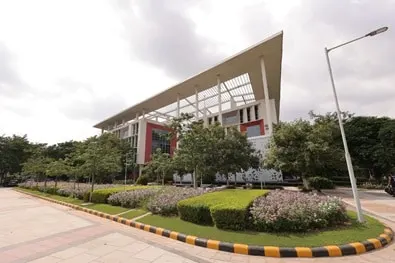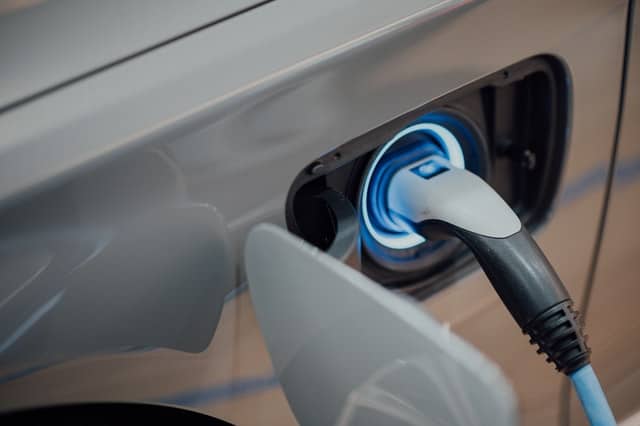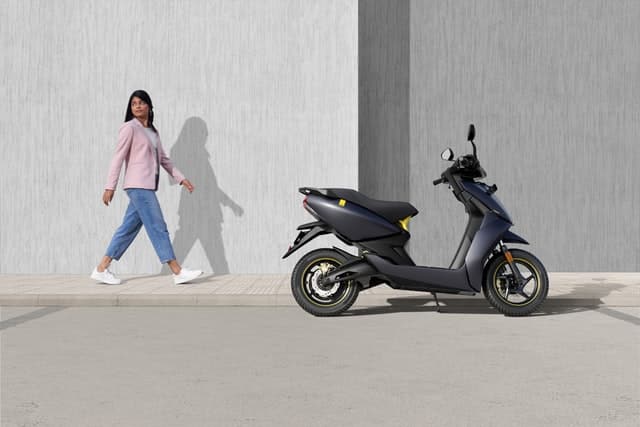Blogs


The Future of Electric Vehicles in India

Environmental pollution has reached almost the threshold level in India. As per the Climate Risk Index 2020, India ranks in the top 5, which means India is vulnerable to climatic change. So, there seem no other options than to adopt e-mobility.
To mitigate environmental issues, the Government of India decided to promote Electronic Vehicles (EV) to reduce pollution.
However, as per a Castrol report, the new car owners wouldn't be buying EVs until 2030 because of several factors.
Proper infrastructure is one of the critical factors. But whatever the cons are of using and promoting EVs on Indian roads, the overall electric cars on the Indian roads will be almost 100 million in the financial year 2030 from just a half million in the financial year 2020.
But what are these electric cars or EVs?
More about Electric Cars
Electric Cars are one of the most recent vehicles run by electricity instead of the typical fuels like petrol, diesel, or CNG.
The electric cars' batteries can be charged for reuse. There are three types of Electric Vehicles available in India as of now. They are-
- Entirely battery-operated electric cars
- Solar-powered electric cars
- Hybrid electric cars
The History of EVs-
The history of the origin of Electric Vehicles (EVs) dates back to the mid-19th century. In 1828, Ányos Jedlik discovered a specific type of electric motor.
He created a small model car that could run on his new motor. Between 1832 and 1839, a Scottish discoverer Robert Anderson discovered a crude carriage run by electricity.
In 1835, Professor of Groningen, the Netherlands, SibrandusStratingh, and his assistant Christopher Becker from Germany created a small-scale electric car run by non-rechargeable primary cells.
Although the origin dates back to the 19th century, the vehicular land speed came around 1900.
Initially, the electric battery-run cars' speed was too less compared to the internal combustion engine vehicles. As a result, people would pay no mind to take an interest in EVs.
But the scenario changed around the 21st century. People started worrying about the hydro-carbon fueled cars that create pollution, bad gas emission, and other disasters to the environment.
Current Scenario:
Since 2010, EVs started becoming popular apart from public transports. The most surprising fact is that by 2016 September, almost 1 Million electric vehicles were delivered globally.
This was the turning point of the global acceptance of electric vehicles. The speed to acceptance was so good that by 2019, almost 4.8 million cars were sold, and by 2020, it reached 10 million units.
As the cost of batteries got down by 73% since 2010, electric cars started to gear up their growth speed. The coming decade is considered as the decade of electric vehicles.
Market share of EVs in India
As electric vehicle manufacturing is becoming popular every day, its market share is also expected to rise greatly. India's GDP is expected to grow by an amazing 25% by 2022.
The best part is that, apart from reducing environmental pollution, EVs can lower oil import by about $60 Billion by 2030. Currently, 82% of the oil demand in India is fulfilled by import. So, it's evident how much beneficial the Indian economy will be if this import cost is reduced.
EVs fuel price
Surprisingly, the fuel price of EVs can be as low as only 1.1Rs/ km. As a result, the overall cost of about Rs 20,000 is reduced while traveling every 5000 km by an EV. Also, it will reduce vehicular emission, which otherwise creates a 3% GDP loss every year.
Campaigns for EV Adoption
When we talk about e-mobility, EVs are the only options. From 1st April 2020 till 31st January 2021, India's fuel price has increased almost 75 times.
With ever-increasing petrol price (almost 95Rs/liter in Delhi as of June 2021), many states in India have already dived into EVs' usage. Delhi and Kolkata are the two forerunners in this aspect. They promoted e-rickshaws that are much environment-friendly and economical.
One amazing fact is, in Delhi, almost 1 Lakh e-rickshaws are operating, and Kolkata is not too far from this rally. This development is encouraging private car owners to switch to EVs.
The Indian Government has started formulating EV adoption, like the National Electric Mobility Mission Plan (NEMMP), Faster Adoption and Manufacturing of (Hybrid) and Electric Vehicles (FAME) Scheme, loan subventions, and income tax rebates alongside similar relaxations on the state level.
According to a Niti Aayog report, India wants a minimum of 10 GWh of cells by 2022.
Some other ways that the Government is implementing for the promotion of EVs in India are-
- Reduced GST amount to only 5% compared to the regular cars' 28%.
- Loans of approx. 1.5Lakhs exemption for buying electric vehicles.
- Customs duty exemption for importing EV parts.
- a five-year phased manufacturing program (PMP) until 2024
Switch Delhi Campaign
Recently, a campaign was run in Delhi, known as the Switch Delhi Campaign, in which people signed to promote electric vehicles. It was an 8-weeks campaign that promoted the benefits of using EVs in industrial, personal, and public uses.
Seeing such an amazing response towards EVs in India, several 2-wheeler manufacturers have decided to manufacture electric bikes apart from the e-cars by the 4-wheeler manufacturers.
Last-Mile deliveries
With the growth of private cars, small transports and other modes for good transports, and trucks were the only solutions. However, some Last-mile delivery companies have taken the responsibilities by themselves to use EVs for transporting deliverables and reducing the carbon footprint from this earth.
Top EV Manufacturer Stocks in India
As the EV market is growing exponentially in India, car and bike manufacturers are gradually inclined to manufacture more electric-run vehicles.
- Mahindra Electric
Mahindra Electric is the forerunner in the EVs industry. They manufactured their first EV in 2001. Mahindra E20 and eVerito are the two popular EV variants by Mahindra Electric.
- Tata Motors
Though a popular name in the Indian automotive industry for manufacturing vehicles for personal use, public transports, and other purposes, Tata Motors is comparatively new to the EVs segments.
Tigor EV, Nano EV, and the Tiago electric variant are some of Tata motors' popular EVs. However, Tata has focused mainly on Passenger Vehicles and electric busses. The demand for this segment of vehicles is expected to reach 4 Lakhs soon.
- Hyundai
Hyundai, with the launch of its Kona EV in India, has overwhelmed the EV market. The EVs by Hyundai is supposed to run 452 km in one charge. It answers the query of all vehicle enthusiasts in India, asking the question, "what's the mileage given." However, the model is about to hit the market in 2-3 years.
- Ashok Leyland
Ashok Leyland has developed busses and trucks based on Indian road requirements. They have introduced battery swapping for India and operating vehicles like the Circuit, HYBUS, Electric Euro 6 Truck, and announced the iBUS.
"TESLA" - The new HYPE or REALITY
In this year, 2021, the American company Tesla is launching Tesla cars in India, as per Nitin Gadkari, The Minister of Road Transport and Highways, Government of India.
The Government of India targeted to install renewable energy capacity of 175 GW by the end of 2022. This includes 10 GW from bio-energy, 100 GW from solar power, 5 GW from hydropower, and 60 GW from the wind.
At the United Nations Climate Action Summit, Prime Minister of India Narendra Modi announced snowballing the renewable energy target to 450 GW by 2030 from 175 GW by 2022.
With these highlights in mind, it is understandable that the Government is accelerating electric vehicles' promotion, which will consume less non-renewable sources of energy, rather than focus on battery charging and emission-free transport.
So, in this scenario, the promotion of TESLA cars in India is a good option for the American company owned by Elon Musk.
However, the subsidy provided to the Indian companies is much higher that can result in the manufacturing cost of the parts of the local companies cheaper than the TESLA one.
Advantages of Using an EV
The main factor that makes EVs the winner in the automotive industry is their environment-friendliness. However, several other factors are too important to ignore.
- Environment first-
The air pollution in urban Indian cities can be reduced to a great extent with Electric cars. These cars use batteries that do not do emissions like the internal combustion engines. Even due to having less or no sound, these vehicles help in reducing noise pollution as well.
- Lower Operational Cost-
It is estimated that almost 75-80% of fuel expenses are reduced by using EVs. Compared to the other conventional cars, EVs have 75% fewer movable parts that also create a much lesser maintenance bill.
- A good amount of savings
As India's Government is inclining towards higher usage of EVs, different incentives and tax relaxations are offered to encourage more buyers.
- BoP deficit
In 2019-20 alone, India imported crude oil worth 120 billion dollars. This BoP (Balance of Payment) can be reduced to a great extent by using EVs.
Disadvantages of using EVs-
- Costly
EVs are a bit more costly since it has lower maintenance costs; as the parts are small and not ample in number in the Indian landscape, the repairing cost increases.
- Infrastructure issues
The scenario in which EVs are expected to operate is still in an ideal condition. There is no ample battery charging center or car repair center, and even manufacturing centers in India. With proper infrastructure built gradually, more vehicle owners are expected to incline towards buying EVs.
- Post Sales service
As EVs have not become too popular in India, the post-sales service is also a bit poor compared to conventional petrol and diesel cars.
- Poor road condition
As the road condition in India is poor, hence the longevity of the cars becomes less. Also, the drivers need to be trained and well-aware while driving these cars.
What can be done for the Future Flourishment of EVs?
India's EV market will grow at a Compound Annual Growth Rate (CAGR) of 22.1 percent shortly. The main reason behind this is the Government's constant support and innovations to eliminate the issues that may otherwise be holding the EV industry from growth.
- More incentives, tax cuts, and rebates should be given to the vehicle purchasers along with the stockholders
- More spending on R&D
- Phasing out the ICE vehicles
- Creating proper infrastructure
- Several drives to make people conscious of the benefits of using EVs
Takeaway
Evolving from one technology to another is always a challenge. For decades, the people of India are habituated to conventional cars. So, suddenly the shift to EVs will be a bit difficult for them.
However, with proper campaigns and financial benefits, electric vehicles will soon be a common affair in the car industry. Currently, 1% of the total car sales in India are EVs.
So, with time, we can expect the number to be growing to a great extent. By any chance, the Government of India plans to make 100% EVs on the road by 2030.
"Subsidizing manufacturing for every aspect of an electric drivetrain will certainly improve the odds. Better researched go-to-market strategies by companies will ensure that they can manage their rollouts in an amplified manner," explained Akhil Aryan, CEO, and co-founder of ION Energy.
Trending Blogs
-
6 Most Demanding Engineering Courses in Future (With Salary & Scope)
-
Top 20 High Salary Courses after 12th Science (PCM) 2025
-
Top 14 Career Options After LLB in India 2025
-
12 Fun Management Games For MBA Students
-
16 Prestigious Law Firms in India to Kickstart Your Career
Latest Blogs
-
10 Best Law Colleges in Delhi NCR: Shape Your Legal Career
-
Highest Paying Jobs after BBA in India: Turning Degrees into Paychecks
-
B.Tech. Admission 2025: Your Path to a Promising Future in Engineering
-
The Ultimate MBA Admission 2025 Guide: Turn Ambition into Achievement
-
What Is Liberal Arts Education: More Than Just a Degree
-
Broadening Horizons: Exploring Liberal Arts Subjects
-
BBA LLB Course: Full Form, Admission Process, Fees, Syllabus & More
-
New Education Policy (NEP): Rewriting the Rules of Higher Education
-
Best BBA Colleges in Delhi NCR: Where Future Business Leaders Are Made
-
Top 14 Engineering Branches in India Explained
Related Blogs

New Education Policy (NEP): Rewriting the Rules of Higher Education
The New Education Policy (NEP) marks a groundbreaking step toward revitalising India’s education system to meet the demands of the 21st century. Thi...

How to Calculate SGPA to Percentage: A Step-by-Step Guide
The evaluation of academic performance varies across every education system worldwide. In Indian Universities, particularly in the Credit System, the ...

CUET UG 2025: Registration, Exam Date, Syllabus, Admit Card
As you gear up for the next phase of your academic journey, CUET UG 2025 emerges as an important examination. CUET, which stands for Common Universi...

Top 10 Highest Paying Jobs in India 2025
India’s job market is transfiguring swiftly, transcending all the boundaries of conventional sectors and welcoming space-age industries that promise...

Exploring Law Syllabus: Subjects, Career Options & More
LLB stands for Bachelor of Laws or Bachelor of Legislative Laws. The LLB programme lasts three years and consists of six semesters of coursework. Labo...

B.Com Honours: Full Form, Syllabus, Subjects, Duration, Scope
The four-year undergraduate B. Com (Hons.) programme is intended to give you a span foundation in business and commerce principles. A wide range of di...



